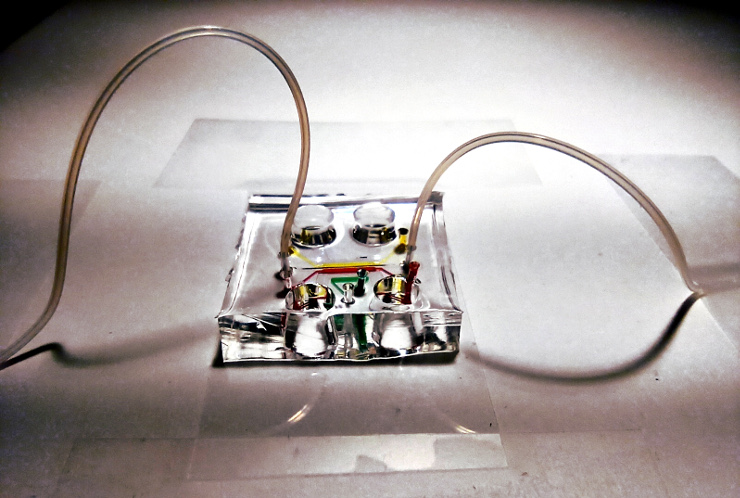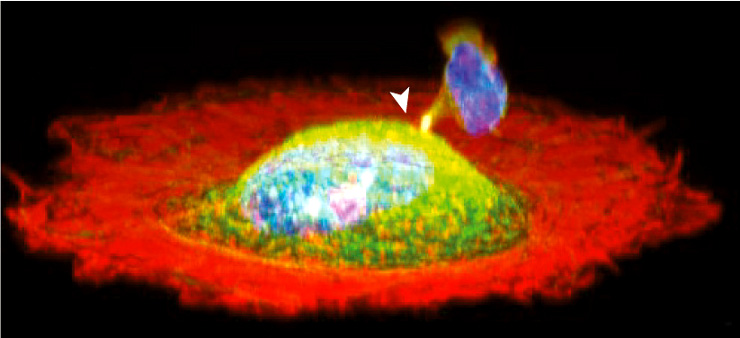Hematopoietic stem cells (HSC) are responsible for the production of all blood cells (macrophages, lymphocytes, neutrophils, red blood cells, platelets, etc.). Many diseases (immunodeficiency, lymphocytopenia, myelodysplastic syndrome) can therefore be explained by an imbalance in this production.
Found within the bone marrow, HSCs self-renew or transform into blood cells – that is, they "differentiate" – in response to chemical signals (hormones, cytokines, etc.). These processes are strongly influenced by their environment, and in particular by contact with other cells present in the bone marrow. Nevertheless, these interactions are difficult to observe inside bones because of their opacity.
 In order to overcome this problem, a team from Irig built a transparent microfluidic chip whose compartments contain the different cell types present in marrow, and injected the HSCs via microchannels. They could thus observe that the HSC move around, especially "visiting" bone cells (osteoblasts).
In order to overcome this problem, a team from Irig built a transparent microfluidic chip whose compartments contain the different cell types present in marrow, and injected the HSCs via microchannels. They could thus observe that the HSC move around, especially "visiting" bone cells (osteoblasts).
By zooming in on the internal structure of HSCs, the researchers found that the nucleus of undifferentiated HSCs or HSCs destined to become lymphocytes (via the lymphoid pathway) is homogeneously surrounded by cytoskeletal constituents (microtubules). In contrast, the nucleus of HSCs destined to become macrophages or dendritic cells (via the myeloid pathway) is constricted and highly deformed. In a previous publication , the biologists showed that the inner architecture of the cells directs the differentiation of HSCs.
When HSCs come into contact with bone marrow cells, a totally unexpected phenomenon occurs: they attach themselves to the stromal cells, not only deforming but completely reorganizing their internal architecture. The center of the microtubule network (the centrosome) positions itself at the point of contact. It's as if our brain moved to our hand whenever we touched an object of interest!
To better understand this novel mechanism of HSC "polarization" on bone cells, the researchers developed a new chip comprising an array of microwells (50 µm in diameter) to allow contact between a bone marrow cell and a single HSC. The polarization of HSCs can then be observed from different angles.


This discovery, and the development of a "bone marrow on a chip" that made it possible, opens up completely new paths of research into diseases related to hematopoietic stem cell dysfunction, particularly leukemia. Do leukemic stem cells polarize normally when they come into contact with bone marrow? If not, how does this defect impact the proliferation of cancer cells? These chips will make it possible to analyze the effect of new compounds on the migration, anchoring, polarization and proliferation of stem cells and tumor cells, and thereby the identification of future drugs.